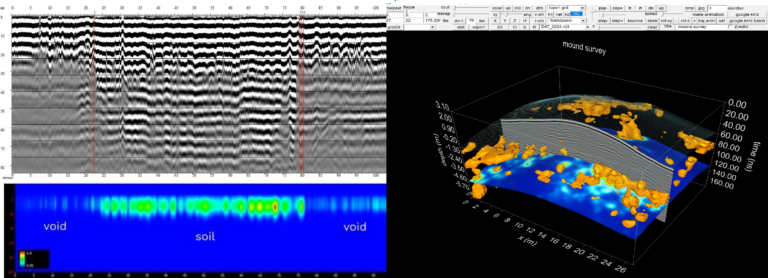Ground Penetrating Radar (GPR) has revolutionized the field of mining engineering, offering invaluable insights into subsurface structures, mineral exploration, and safety assessments. This article delves into the diverse applications of GPR in mining engineering, highlighting its significance in ore body detection, ground stability assessment, and environmental monitoring.
1. Ore Body Detection and Resource Exploration
GPR plays a crucial role in mining engineering by enhancing ore body detection and resource exploration. Utilizing radar waves, GPR can penetrate deep into the Earth’s crust, identifying mineral deposits and delineating ore bodies with high precision. This technology aids mining companies in optimizing exploration efforts, reducing costs, and improving resource extraction efficiency.
2. Ground Stability Assessment and Risk Management
In mining operations, ensuring ground stability is paramount to preventing accidents and minimizing disruptions. GPR enables comprehensive ground stability assessments by detecting subsurface features such as voids, fractures, and geological discontinuities. This information helps engineers and geologists assess potential risks, design safe excavation plans, and implement effective ground reinforcement measures.
3. Environmental Monitoring and Sustainability
GPR contributes significantly to environmental monitoring and sustainability in mining engineering. By mapping subsurface conditions and monitoring groundwater levels, GPR helps mitigate environmental impacts associated with mining activities. It assists in identifying contamination pathways, assessing the integrity of containment structures, and monitoring the effectiveness of remediation efforts, ensuring responsible mining practices.
4. Environmental Monitoring and Rehabilitation:
Ground Penetrating Radar supports environmental monitoring and rehabilitation efforts in mining operations. By detecting subsurface contaminants, delineating contaminated zones, and assessing the effectiveness of remediation efforts, GPR can help minimize the environmental impact of mining activities. GPR surveys can also be used for monitoring groundwater levels, tracking contaminant migration pathways, and evaluating the success of groundwater remediation strategies. This data-driven approach facilitates proactive environmental management, enabling miners to comply with regulatory requirements, mitigate risks to ecosystems, and restore impacted environments to their natural state.

Ground Penetrating Radar (GPR) has become an indispensable tool for enhancing exploration, safety, and environmental management in mining engineering. From ore body detection and geotechnical investigations to void detection and environmental monitoring, GPR offers valuable insights into subsurface conditions and geological hazards, enabling miners to optimize resource extraction processes, ensure mine safety, and minimize environmental impacts. As technology continues to advance, the integration of GPR in mining engineering practices is poised to further enhance efficiency, sustainability, and safety standards in the mining industry worldwide.
